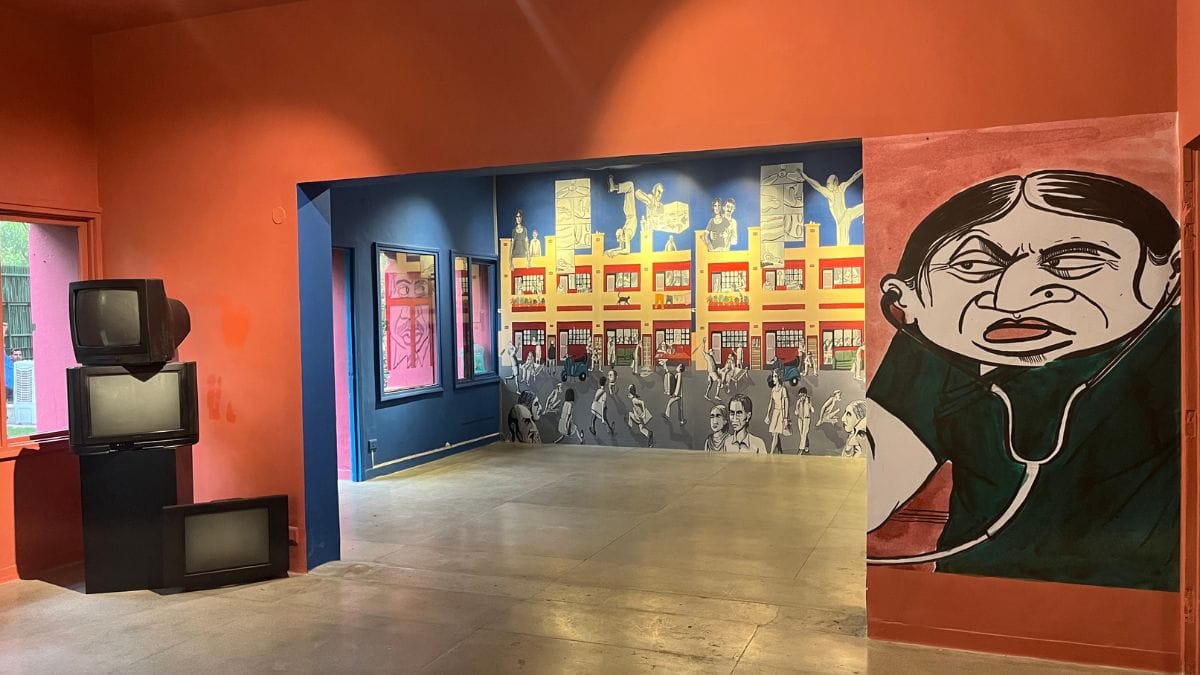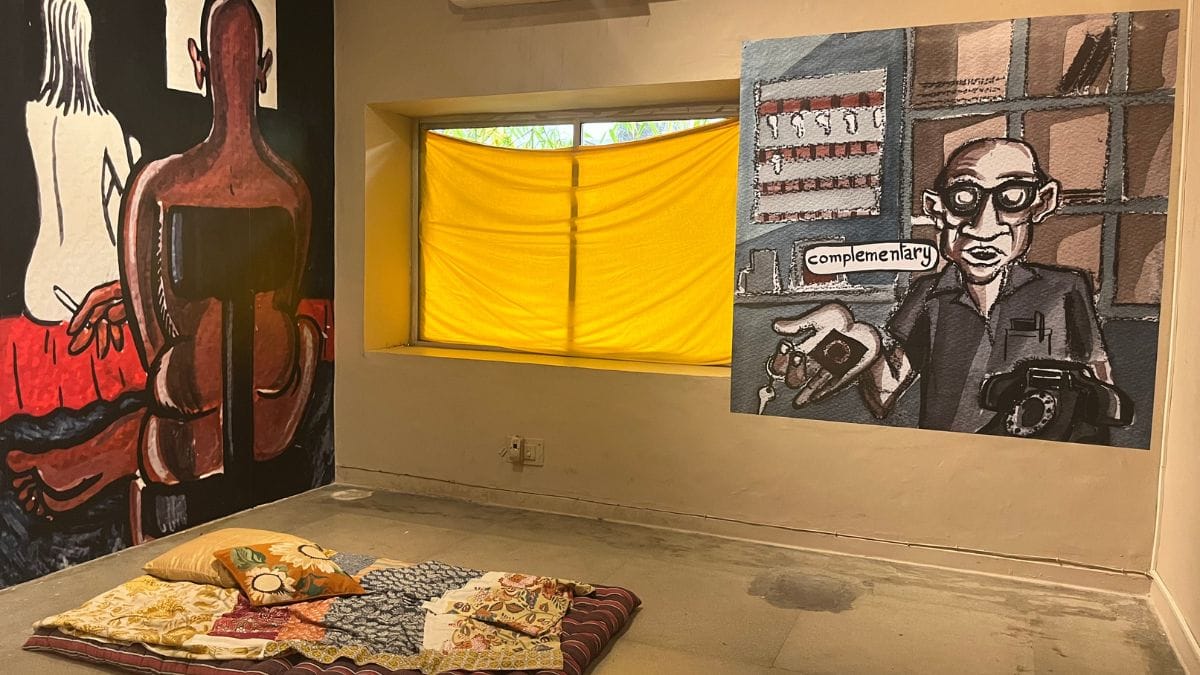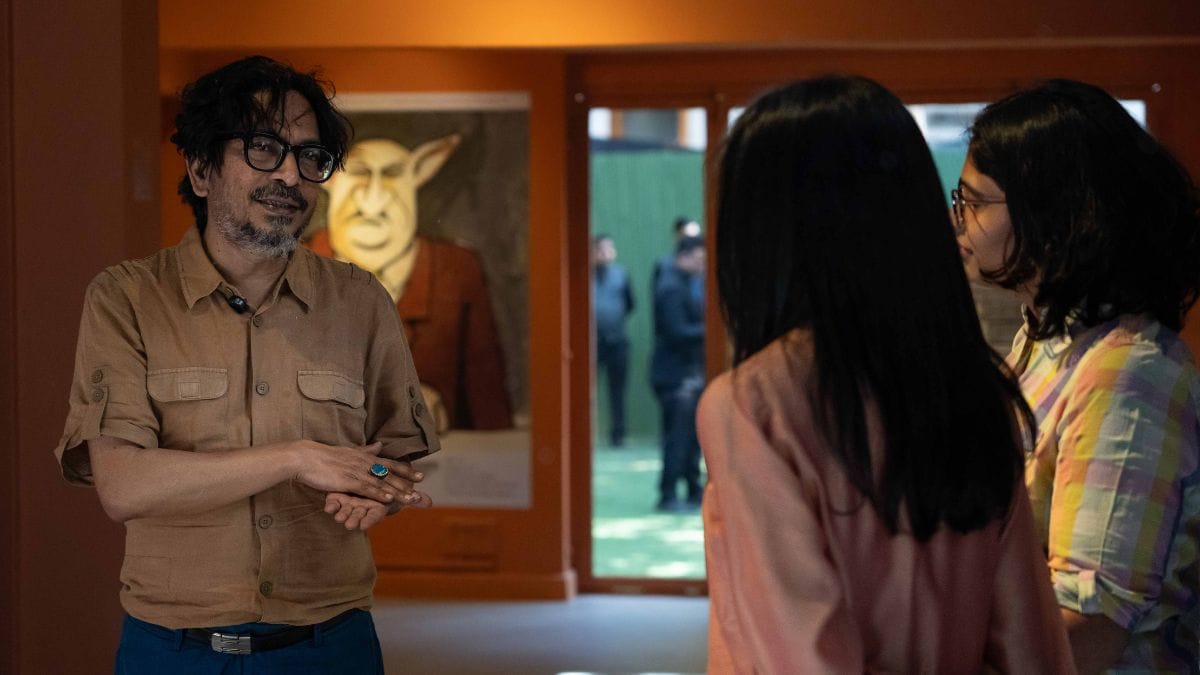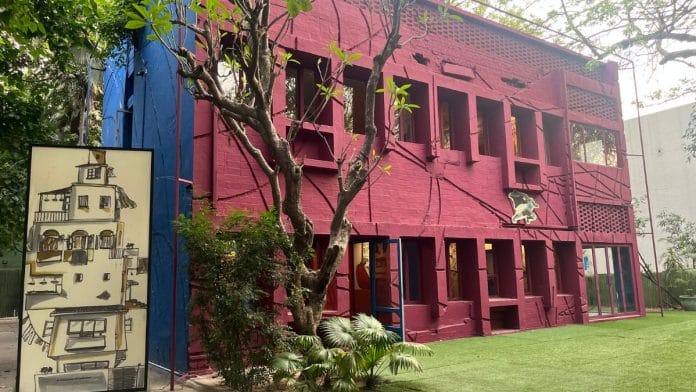New Delhi: The RWA uncles, the Borolin–smelling aunty dragging her sons for taekwondo, the children reading in balconies, the doctor with her stethoscope—Delhi recently witnessed the daily orchestra of the city’s middle class in an exhibition by artist Sarnath Banerjee at 24, Jor Bagh.
Located across the Lodhi Gardens, 24, Jor Bagh was an old house that functioned as an art space for The Gujral Foundation. Having hosted artistic and cultural activities for the last 15 years, it closed permanently with the end of its final exhibition on 26 April.
“The final presentation, The Daily Melancholony of a Heartburn City, served as a compelling and thoughtful culmination of the years at this space, capturing the spirit of the house with characteristic imagination, irony, and wit,” said Feroze Gujral, Director, The Gujral Foundation.

Not another white cube
Unlike most art galleries, which end up becoming ‘white cubes’ that cannot be modified, the space at 24, Jor Bagh itself could be transformed externally and internally to host soundscapes, light installations, performances, and exhibitions. It was likely the only contemporary art space in India to give artists the freedom to make structural changes at the venue.
“In all my concept-curations, it has been my conscious effort to give opportunity to projects which otherwise will not find space in this city, just like this one—graphic art has not gotten its due in India,” Gujral added.
Over the last 15 years, some of the most significant experimental exhibitions and performances were showcased at 24, Jor Bagh.
Tolstoy Farm: Archive of Utopia (2011) was a group exhibition curated by Gayatri Sinha, which explored artists’ responses to utopian visions. Wish Trees in India (2012) was a solo show of works by multimedia artist Yoko Ono.

Queen-Size (2016) was an interactive performance by Lalit Khatana and Parinay Mehra, choreographed by Mandeep Raikhy, which examined the public and private lives of LGBTQ+ individuals in love. By making queer intimacy visible, it posed questions around spectatorship, privacy and dissent.
This Night Bitten Dawn (2016), a group show curated by Salima Hashmi, was inspired by her father Faiz Ahmed Faiz’s iconic poem, Subah-e-Azadi (1996).
“We have been in the house as Raqs Media Collective a few years back. We cut the room and completely transformed the space… [with every exhibition] the house was the same but different. It has been a part of the cultural landscape of the country,” said Shuddhabrata Sengupta, an artist, curator and teacher.
Many from the arts circuit have a personal connection with the space. Their experiences affirm the house as a site of artistic and intellectual engagement.
“This is not the end but a new beginning for The Gujral Foundation,” said Gujral. Later in the year, she will declare new plans for the foundation.
Also read: In the Mood for Love in Delhi—artist reimagines Wong Kar-wai’s film in his paintings
The art of nostalgia
Sarnath Banerjee has been drawing the city for many years. He has mapped it, not geographically but in psychological, emotional, and absurd registers. His graphic novels are a satirical and anthropological portrayal of middle-class Indian life, particularly in Delhi, populated with “some nice and some nefarious characters”.

The Daily Melancholony of a Heartburn City came from two of Banerjee’s bestselling graphic novels, The Harappa Files (2011) and All Quiet in Vikaspuri (2015). The former captures Delhi in the 1990s, the golden age of optimism and possibility. The latter portrays a future focused on economic efficiency at the cost of tradition and community.
The exhibition was a testament to Banerjee’s ability to portray nostalgia and the “condition” of Delhi. It also weaved in the impact of the dramatic changes that the country went through with the economic reforms introduced in 1991.
Stocking the space with fragments of a lost domestic life, such as Colgate Tooth Powder, Sat Isabgol, and Rooh Afza bottles, the exhibition offered 24, Jor Bagh the perfect farewell.
“This house became a metaphor of the city,” Gujral said.
Shilpi Goswami is an alumnus of the inaugural batch of ThePrint School of Journalism.
(Edited by Prasanna Bachchhav)






